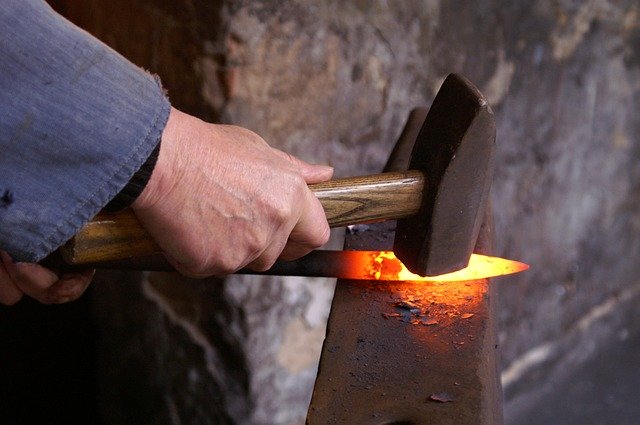When I was a student at Central High School, one of my Agriculture teachers introduced our class to the forge. In those days, most Ag shops and many farms had a small forge to make or repair various implements. I still remember how the metal glowed red hot after being heated and how it could be bent and shaped into useful tools.
Forges were also a common fixture throughout our nation’s early years as blacksmiths were called upon to shoe horses, make buggy rims, fashion hay hooks, and create many products necessary in rural America. Forges were vital in every community and the smiths who worked them not only needed strong muscles, but skill and wisdom as well.

By the time I made it back to Central as an Ag Teacher, the forge had disappeared but I continued to teach basic metalworking using other methods. I also took classes on field trips to see blacksmith demonstrations as well as more modern fabrication procedures.
I still remember Mr. Bob Moss heating the straight plain pieces of black metal in his Maurertown forge. He started out with a piece he had bought for a dime from the scrapyard. After heating, splitting, pounding, shaping, and polishing, he ended up with a product that was worth more than one hundred times its original value.
The process for the metal, however, I’m sure was quite stressful. After being heated to nearly 2,000 degrees Mr. Moss removed it from the fire only to pound it repeatedly with a heavy hammer. He split the end with a chisel and after numerous heatings and beatings, it emerged as a meat fork. With fire and a strong arm he turned a piece of useless scrap into a valuable and beautiful product.
Until metal is heated, however, it remains unworkable. Conversely, if the smith gets distracted and forgets it, it becomes too hot and either disintegrates or surrenders its desirable qualities to the flames.
Imagine how stressed the metal must have felt throughout this process. Imagine it worrying that the smith had forgotten it and wondering how any good could possibly come from such pain. But all along the blacksmith had a plan and he kept working until he achieved it.
As I watched this craftsman, I thought about God’s work on us. He rescues us from sin’s junkyard and begins shaping us to His liking. Like the smith, He has a desired outcome for each of us but it often requires the fires of adversity to force us to yield to His work. As we do, however, He fashions us into pieces not only of value and service, but even exquisite beauty.
Sometimes we think He’s forgotten us and wonder what good our adversity could bring. A quick survey of Scripture and history, however, will remind us that God’s most useful servants went through the hottest fires. Job, Joseph, Moses, and Helen Keller are just a few. Paul wrote in Philippians that he considered it a privilege to suffer for Jesus. Jesus Himself suffered more than any and emerged not only most useful, but also most beautiful.
One other thing Mr. Moss told us was that he leaves the hammer dents and forging marks on his pieces for they clearly demonstrate they were not mass produced, but each a unique handmade creation of the craftsman.
Again, I thought about how Jesus’ scars beautified rather than defaced Him and how the same is true with us. Our wounds demonstrate that no two of us are alike for the Master has formed us individually with distinctive characteristics for special tasks.
Unlike the lifeless metal, however, we have freewill and can accept or reject the divine Blacksmith’s work. We can allow Him to use adversity’s fires to mold and shape us to His will or we can become hard and bitter as Pharaoh did.
As we reflect on the blacksmith’s work, may we each submit to God’s will and allow Him to fashion us into people that glorify Him and bless others.
Blessings, George